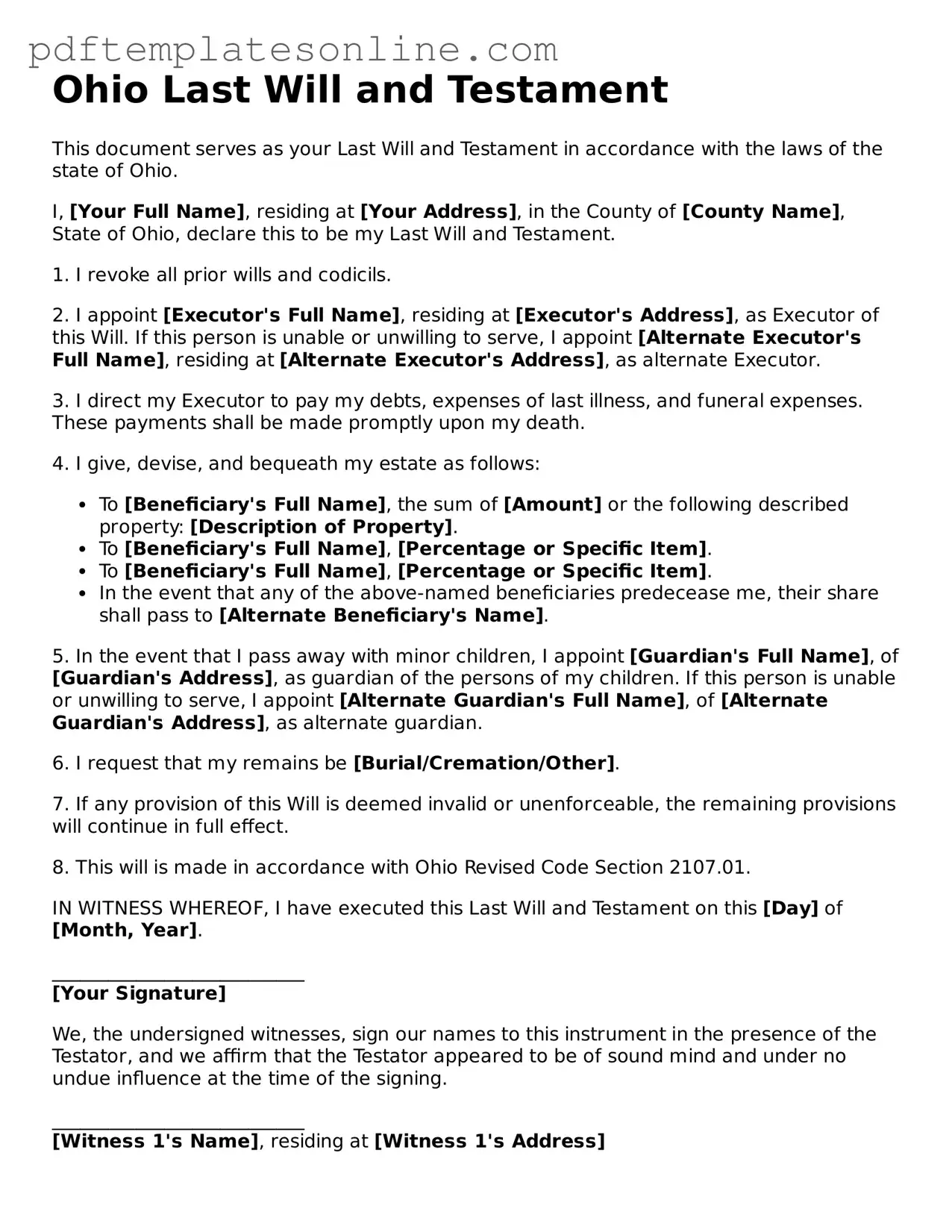Filling out the Ohio Last Will and Testament form can be a daunting task. Many individuals make common mistakes that can lead to confusion or even invalidate the will. Awareness of these pitfalls can help ensure that your intentions are clearly communicated.
One frequent mistake is not clearly identifying the testator. The form should include the full legal name of the person creating the will. Omitting middle names or using nicknames can lead to complications later. Always use the name as it appears on official documents.
Another error occurs when individuals fail to sign the will in the presence of witnesses. Ohio law requires that the will be signed by the testator and witnessed by at least two individuals. If this step is overlooked, the will may not hold up in court.
Many people also neglect to date the will. Including the date is crucial as it helps to establish the most current version of the will. Without a date, it can become challenging to determine which document reflects the testator's latest wishes.
Some individuals mistakenly assume that a handwritten will is automatically valid. While Ohio does recognize holographic wills, they must still meet specific criteria. If the will is not properly formatted or lacks necessary signatures, it may be deemed invalid.
Another common oversight is failing to name an executor. The executor is responsible for carrying out the terms of the will. Without this designation, the probate court may appoint someone who may not align with the testator's wishes.
It is also important to be specific when naming beneficiaries. Vague language can lead to disputes among family members. Clearly identifying beneficiaries and their respective shares can help prevent misunderstandings.
Lastly, people often forget to update their wills after significant life events. Changes such as marriage, divorce, or the birth of a child can impact how assets should be distributed. Regularly reviewing and updating the will ensures that it accurately reflects current intentions.
